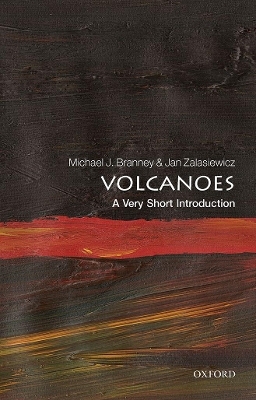
Volcanoes
Oxford University Press (Verlag)
978-0-19-958220-4 (ISBN)
Volcanoes are some of the most dramatic expressions of the powerful tectonic forces at work in the Earth beneath our feet. But volcanism, a profoundly important feature of Earth, and indeed of other planets and moons too, encompasses much more than just volcanoes themselves. On a planetary scale, volcanism is an indispensable heat release mechanism, which on Earth allows the conditions for life. IIt releases gases into the atmosphere and produces enormous volumes of rock, and spectacular landscapes - landscapes which, during major eruptions, can be completely reshaped in a matter of hours. Through geological time volcanism has shaped both climate and biological evolution, and volcanoes can affect human life, too, for both good and ill. Yet, even after much study, some of the fundamental aspects of volcanicity remain mysterious.
This Very Short Introduction takes the readers into the inferno of a racing pyroclastic current, and the heart of a moving lava flow, as understood through the latest scientific research. Exploring how volcanologists forensically decipher how volcanoes work, Michael Branney and Jan Zalasiewicz explain what we do (and don't) understood about the fundamental mechanisms of volcanism, and consider how volcanoes interact with other physical processes on the Earth, with life, and with human society.
ABOUT THE SERIES: The Very Short Introductions series from Oxford University Press contains hundreds of titles in almost every subject area. These pocket-sized books are the perfect way to get ahead in a new subject quickly. Our expert authors combine facts, analysis, perspective, new ideas, and enthusiasm to make interesting and challenging topics highly readable.
Mike Branney is a Professor of Volcanology at the University of Leicester, and jazz pianist. He investigates explosive super-eruptions, how volcanic ash is transported across the Earth surface, and how volcanoes collapse catastrophically, and has published many key papers on these topics. He works in Korea, Mexico, Phillippines, the UK, Canary Islands, Italy, and the USA. Jan Zalasiewicz is a Professor at the University of Leicester, and before that worked at the British Geological Survey. A field geologist, palaeontologist and stratigrapher, he teaches various aspects of geology and Earth history to undergraduate and postgraduate students, and is a researcher into fossil ecosystems and environments across over half a billion years of geological time. He has published over a hundred papers in scientific journals, and has written and edited several books, including The Planet in a Pebble: a journey into Earth's deep history (OUP 2012), Rocks: A Very Short Introduction (OUP 2016), and Geology: A Very Short Introduction (OUP, 2018).
Prologue
List of illustrations
1 The making of magma
2 How do volcanoes explode?
3 Volcanoes and water
4 Lava
5 Making and breaking volcanoes
6 Hidden volcanoes: tales from the past
7 Volcanoes, climate, and the biosphere
8 What have volcanoes done for us?
9 Volcanoes beyond Earth
A short glossary
Further reading
Index
| Erscheinungsdatum | 17.11.2020 |
|---|---|
| Reihe/Serie | Very Short Introductions |
| Zusatzinfo | Some black and white images |
| Verlagsort | Oxford |
| Sprache | englisch |
| Maße | 113 x 175 mm |
| Gewicht | 144 g |
| Themenwelt | Sachbuch/Ratgeber ► Natur / Technik |
| Naturwissenschaften ► Geowissenschaften ► Geologie | |
| ISBN-10 | 0-19-958220-3 / 0199582203 |
| ISBN-13 | 978-0-19-958220-4 / 9780199582204 |
| Zustand | Neuware |
| Haben Sie eine Frage zum Produkt? |
aus dem Bereich


